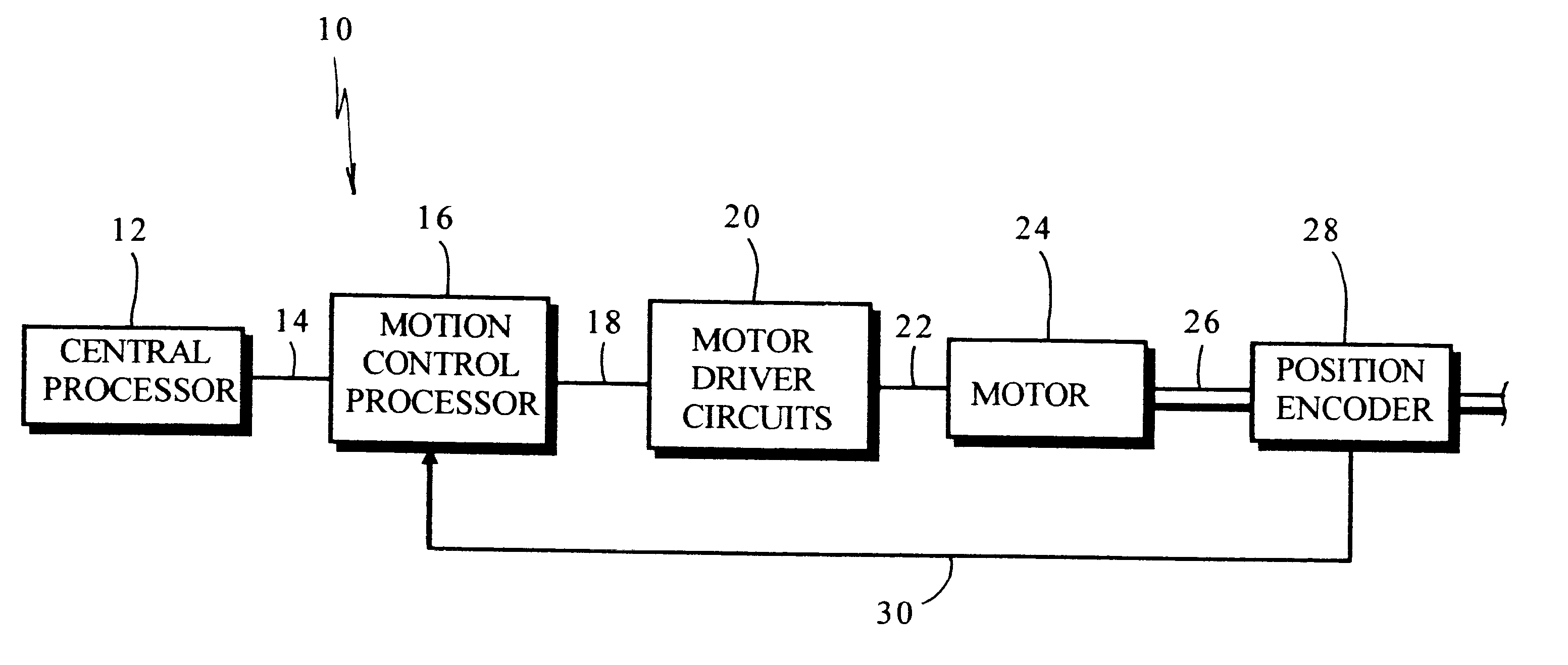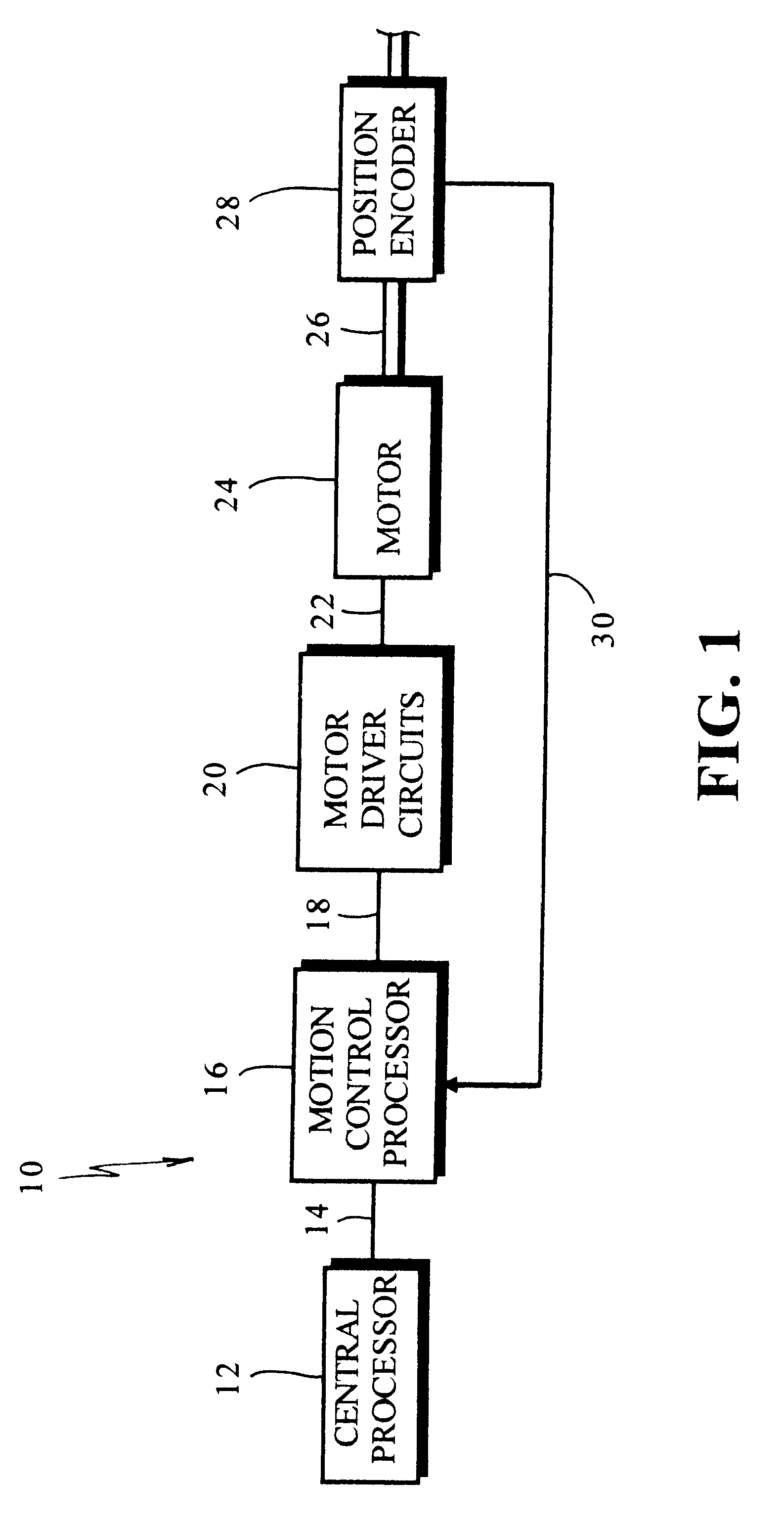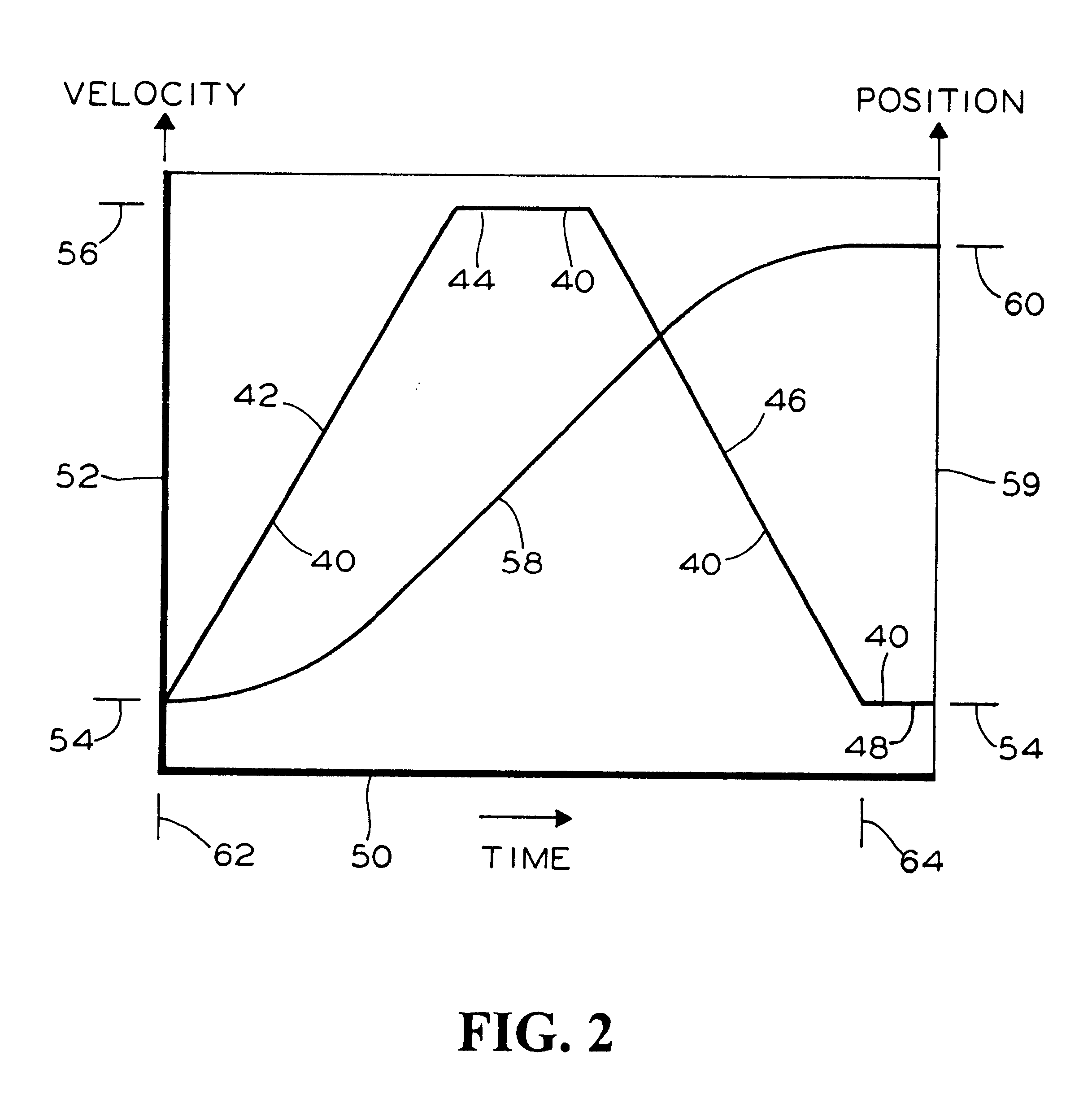System for detection of obstructions in a motorized door system
a technology for obstruction detection and motorized doors, applied in the direction of motor/generator/converter stoppers, motor/electric converter control, instruments, etc., can solve the problems of door which attempts to continue a closing stroke, passenger injuries, and general unreliable edge sensors
- Summary
- Abstract
- Description
- Claims
- Application Information
AI Technical Summary
Benefits of technology
Problems solved by technology
Method used
Image
Examples
Embodiment Construction
, particularly, when the detailed description is taken in conjunction with the attached drawing figures and with the appended claims.
FIG. 1 is a schematic illustration of a presently preferred embodiment of the invention;
FIG. 2 is a plot showing ideal profiles for door velocity and distance traveled versus time;
FIG. 3 is a plot showing allowable envelopes for the door velocity for various segments of the stroke;
FIG. 4 is a plot showing departure from the envelope when an obstruction is detected;
FIG. 5 is a flowchart of the process of detecting obstructions during a stroke of the door based on a velocity discrepancy of the door;
FIG. 6 is a flowchart of the process of detecting obstructions during a stroke of the door based on a rate of change of velocity with time;
FIG. 7 is a flowchart of the presently preferred method of the invention in which different tolerances are permitted in different portions of the stroke; and
FIG. 8 is a flowchart of a method of detecting obstructions during...
PUM
 Login to View More
Login to View More Abstract
Description
Claims
Application Information
 Login to View More
Login to View More - R&D
- Intellectual Property
- Life Sciences
- Materials
- Tech Scout
- Unparalleled Data Quality
- Higher Quality Content
- 60% Fewer Hallucinations
Browse by: Latest US Patents, China's latest patents, Technical Efficacy Thesaurus, Application Domain, Technology Topic, Popular Technical Reports.
© 2025 PatSnap. All rights reserved.Legal|Privacy policy|Modern Slavery Act Transparency Statement|Sitemap|About US| Contact US: help@patsnap.com



